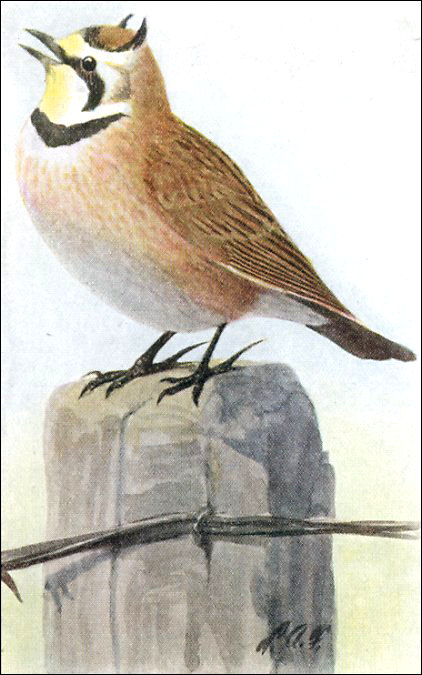
Various groups of animals are limited to either the Old World or the New World, or to specific continents. Hummingbirds, for example, are limited to North and South America, and Australia is famous for having animals such as kangaroos and platypuses that occur in no other place. But sometimes, one adventuresome creature forsakes all other members of its group and strikes out on its own. Our Horned Lark is one of these, the only member of its family to leave the Old World for the New.
These larks thrive in short-grass country and thus are thoroughly at home in the desert grasslands of the Chihuahuan Desert. But, as one might expect from a bird that's made it here from Asia, it's versatile, living and breeding all the way from low desert to above timberline. Of course, just as with the Great Horned Owl, Horned Larks don't really have horns—just feathers that give that impression. One thing these birds do have, however, is the ability to sing like a lark. And that is no small thing!

![]()
Contributor: Arthur H. Harris, Laboratory for Environmental Biology, Centennial Museum, University of Texas at El Paso.
Desert Diary is a joint production of the Centennial Museum and KTEP National Public Radio at the University of Texas at El Paso.

Painting of Horned Lark by Louis Agasszi Fuertes (after Henshaw, 1921).
Henshaw, H. W. 1921. The book of birds. Common birds of town and country and American game birds. National Geographic Society, Washington, D.C. 195 pp.